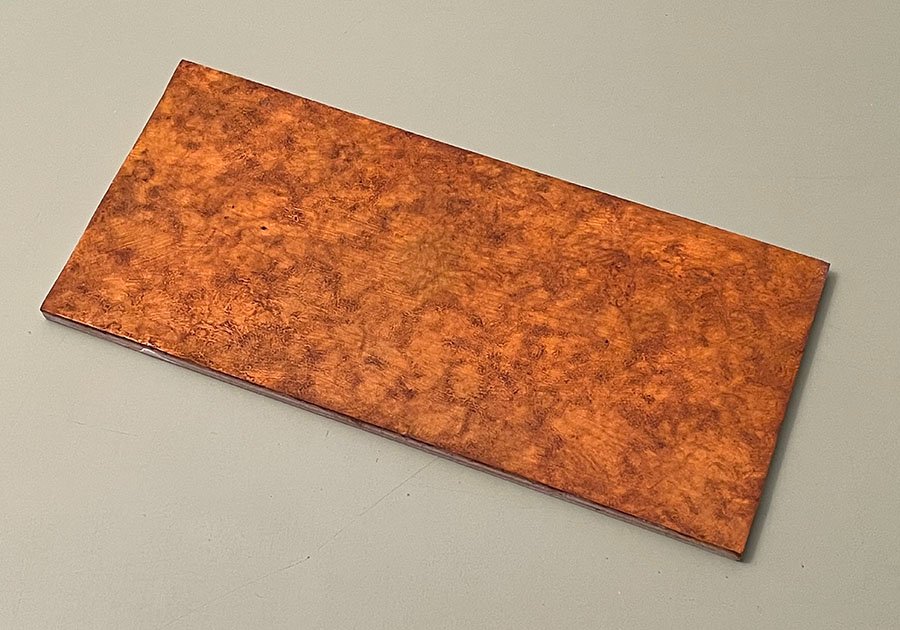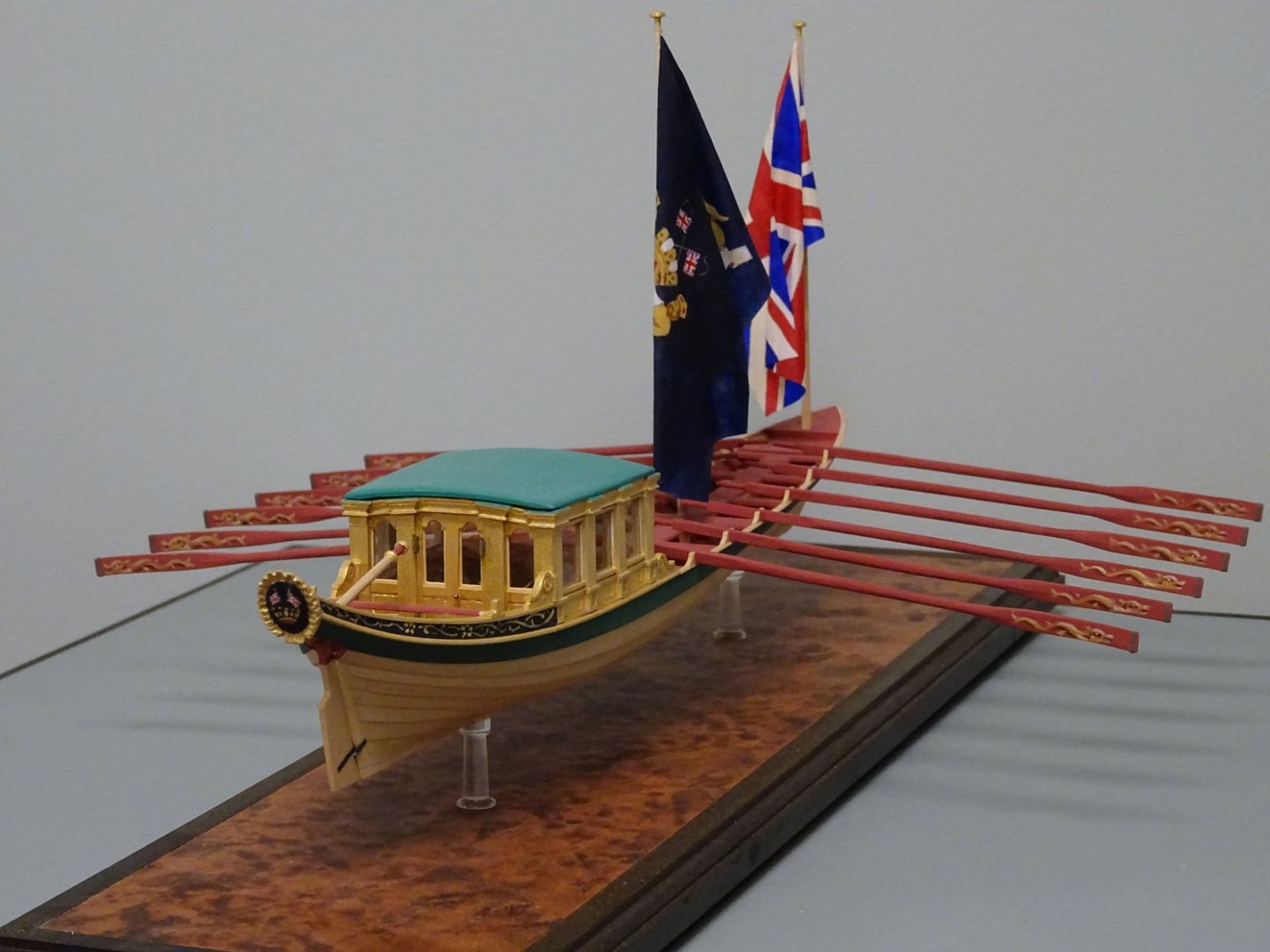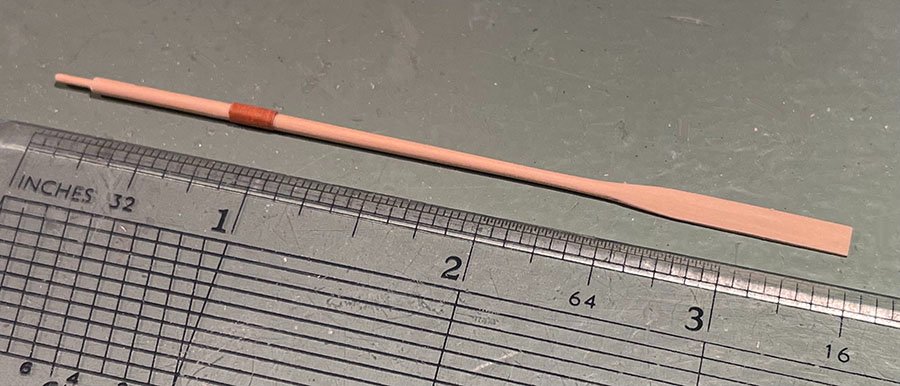-
Posts
13,343 -
Joined
-
Last visited
Content Type
Profiles
Forums
Gallery
Events
Everything posted by druxey
-
There are so many creative solutions to any problem. That's one of them!
- 160 replies
-
- Model Shipways
- norwegian sailing pram
-
(and 1 more)
Tagged with:
-
Now what would be really interesting is for you to build this kit, then build a modern kit version and see how the two compare!
- 26 replies
-
- Maine
- Laughing Whale
-
(and 2 more)
Tagged with:
-
What plug? Nice progress, Toni! My only comment is that I interpret the shaded are at the tip of the knee as being shaved away to a blunt point as seen from above. If you can do that, the carving will look even nicer. Oh, and don't forget the shallow notch for the gammoning. See the Weazle draught.
-
Eberhard: I was lucky this time. I made 12 blanks and did not have to re-do any of the ten. HH: Thank you. If you know the tricks of the trade, faux wood grain of all kinds is not that difficult. A wonderful book on the subject is: Professional Painted Finishes, by the Marx brothers (not those ones!) Allen and Robert and Ina Brosseau Marx, Watson Guptill, 1991.
- 433 replies
-
- open boat
- small boat
-
(and 1 more)
Tagged with:
-
All ten oars are now carved and ready for bindings and leathering. Work continues on the base and pedestals. The latter will be from ⅛" diameter acrylic rod, so as to be minimalist.
- 433 replies
-
- open boat
- small boat
-
(and 1 more)
Tagged with:
-
Yes, softening means a very light rounding off of a sharp edge.
- 160 replies
-
- Model Shipways
- norwegian sailing pram
-
(and 1 more)
Tagged with:
-
That galley roof is beautiful. I'm sorry that it will hardly be seen.
- 589 replies
-
- le gros ventre
- cargo
-
(and 1 more)
Tagged with:
-

HMS Euryalus 1803 by rlb - 1:48 scale
druxey replied to rlb's topic in - Build logs for subjects built 1801 - 1850
Looking very nice, Ron.- 122 replies
-
- Euryalus
- Plank-on-frame
-
(and 4 more)
Tagged with:
-
As a bit of light relief while making oars (five down, five to go!) I faux-painted a burlwood base for the model. There will be molding all the way around and a sub-base as well.
- 433 replies
-
- open boat
- small boat
-
(and 1 more)
Tagged with:
-
Shipman: Something in the order of 0.010" at 1:48 scale (I think that's was what you were asking!)
- 433 replies
-
- open boat
- small boat
-
(and 1 more)
Tagged with:
-
Keith: Theoretically 5/8", but they are actually a whisker thicker for integrity of the blade ends.
- 433 replies
-
- open boat
- small boat
-
(and 1 more)
Tagged with:
-
They are not complete yet nor bound with a metal strap to prevent splitting. All in good time, Roger!
- 433 replies
-
- open boat
- small boat
-
(and 1 more)
Tagged with:
-
Contour duplicators are much too large and coarse to be useful in model-making. Save your money, unless you are doing house reno's.
- 160 replies
-
- Model Shipways
- norwegian sailing pram
-
(and 1 more)
Tagged with:
-

HMS Euryalus 1803 by rlb - 1:48 scale
druxey replied to rlb's topic in - Build logs for subjects built 1801 - 1850
If the light balance is a little off, the joinery certainly isn't!- 122 replies
-
- Euryalus
- Plank-on-frame
-
(and 4 more)
Tagged with:
-
It is much better that the thwarts are too long than too short! No-one has invented a good wood stretcher yet. Card patterns are certainly the way to go, just as you suggested. Cut a piece roughly to the angle you need, then refine it by careful trimming. For complex shapes, you can glue small pieces of card to a larger one to get exactly the shape you need.
- 160 replies
-
- Model Shipways
- norwegian sailing pram
-
(and 1 more)
Tagged with:
-
Good question, Greg. The oars will be deployed in the same way as the Greenwich Hospital barge model.
- 433 replies
-
- open boat
- small boat
-
(and 1 more)
Tagged with:
-
Thank you so much, folks. Pete: I, too, was once in awe of other model-makers. Slowly, bit by bit, I kept improving and learning. You can do it too! Pictured is the prototype for the 14' 0" oars. These are probably the smallest and most delicate I have made so far. I still have to add the binding on the end of the blade. One down, nine to go....
- 433 replies
-
- open boat
- small boat
-
(and 1 more)
Tagged with:
-
David: your tactic of placing a clamp or even a loop of seizing line on with the shroud pair in place, sliding it off and completng the seizing is a great strategy. It's worked well for me!
-
I found making a maquette (larger sized) in clay first helped me get the 3D problems worked out before carving in wood. It helped me visualize what to cut away. I agree that there is much more control with hand tools than with rotary power. Your banner holding angel looks good. The more carving you do you'll find you get rapidly better. (I shudder at some of my early attempts!) I also found looking at classical sculpture pictures helped me a lot.
-
Maury: Thanks for asking, but no, as it would not really add anything to what has already been published.
- 433 replies
-
- open boat
- small boat
-
(and 1 more)
Tagged with:
-
I'm amazed that you can get such clean edges painting on a woven material like that, Steven.
- 740 replies
-
- Tudor
- restoration
-
(and 4 more)
Tagged with:
-
Now you are just having fun! Very nicely realised details.
- 589 replies
-
- le gros ventre
- cargo
-
(and 1 more)
Tagged with:
-

ancre La Belle 1684 by Oliver1973 - 1/36
druxey replied to Oliver1973's topic in - Build logs for subjects built 1501 - 1750
I bet you were nervous drilling those hawse holes! Well done.
About us
Modelshipworld - Advancing Ship Modeling through Research
SSL Secured
Your security is important for us so this Website is SSL-Secured
NRG Mailing Address
Nautical Research Guild
237 South Lincoln Street
Westmont IL, 60559-1917
Model Ship World ® and the MSW logo are Registered Trademarks, and belong to the Nautical Research Guild (United States Patent and Trademark Office: No. 6,929,264 & No. 6,929,274, registered Dec. 20, 2022)
Helpful Links
About the NRG
If you enjoy building ship models that are historically accurate as well as beautiful, then The Nautical Research Guild (NRG) is just right for you.
The Guild is a non-profit educational organization whose mission is to “Advance Ship Modeling Through Research”. We provide support to our members in their efforts to raise the quality of their model ships.
The Nautical Research Guild has published our world-renowned quarterly magazine, The Nautical Research Journal, since 1955. The pages of the Journal are full of articles by accomplished ship modelers who show you how they create those exquisite details on their models, and by maritime historians who show you the correct details to build. The Journal is available in both print and digital editions. Go to the NRG web site (www.thenrg.org) to download a complimentary digital copy of the Journal. The NRG also publishes plan sets, books and compilations of back issues of the Journal and the former Ships in Scale and Model Ship Builder magazines.










